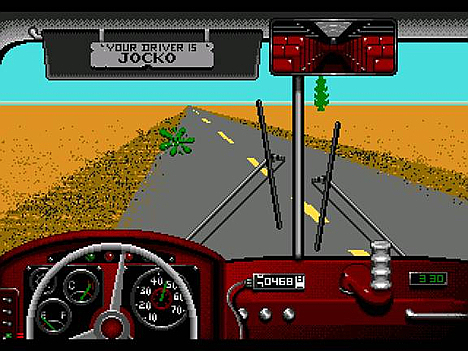Comedy Group is Gaming For The Greater Good
For the third year, a Victoria sketch comedy troupe is set to play the world’s most boring video game for as long as they’re paid to do so, and they’re doing it for the kids.

Staring at this for over 100 hours. For the kids.
LoadingReadyRun, the Victoria-based geek comedy group starts their third annual Desert Bus for Hope campaign, a fundraiser for the Seattle-based Child’s Play Charity, this Friday. The charity, started by web-cartoonists Jerry Holkins and Mike Krahulik of the popular strip Penny Arcade, raises funds for children’s hospitals around the world, including nine in Canada. It donates over one million dollars yearly. Contributors can choose which hospital to contribute to, which include the B.C. Children’s Hospital, Victoria General Hospital and the Alberta Children’s Hospital. Funds collected will go towards general cash donations and video games for long term pediatric patients.
To raise the funds, LoadingReadyRun will play a game designed to be terrible. Desert Bus was intended to be a part of Penn & Teller’s Smoke and Mirrors for the Sega CD. The game was never released, but it received new life after being leaked on the internet. In Desert Bus, players drive a bus from Tuscon, Arizona to Las Vegas, Nevada in real time. There are no enemies, obstacles or passengers. The alignment on the bus is slightly off, so players cannot simply tape down the accelerator as they may drive off the road in an entirely anti-climactic “crashâ€, resulting in their being towed back to their origin – in real time. The most exciting part of the trip occurs hours in when a bug splats on the window. Upon reaching their destination, a player receives one point, turns around, and heads back to the other way, an endless loop of boredom.
The game was designed to be a response to Janet Reno and Hillary Clinton, then Attorney General and First Lady and their demonization of explicit video games, a battle the future Senator Clinton would continue to the present day. Senator Clinton was instrumental in the media firestorm following the “Hot Coffee†scandal surrounding a pornographic rhythm game cut from the production version of “Grand Theft Auto: San Andreasâ€, but uncovered by user modifications.
In his daily podcast, Penn Jillette discussed the reasoning behind the game in detail. “We were planning on giving a very lavish prize for the person that got the highest score[…]like a hundred points. So 800 hours of playing this. We were hoping that groups of people, like fraternities and stuff would playâ€.
The marathon is endorsed by both Penn and Teller, who both donated and contacted the team.
Last year, the group drove for 108 hours and raised $70,423 for Child’s Play. Driving in shifts and rallying morale with the oft-repeated slogan of “For The Childrenâ€, the group aims to beat that number this year.
The marathon will be broadcast live. According to LoadingReadyRun co-founder Paul Saunders, “The mixture of generosity and spite is a really powerful thing.†Aside from straight donations, last year’s event was buoyed by auctions through the live chatroom, requests for group karaoke over the live webcam, and even donation bribes in exchange for sending LoadingReadyRun member and Event Coordinator Matt Wiggins to multiple showings of “Twilight†against his will.
To view the telethon, donate money and for more information, visit DesertBus.org. It starts Friday, Nov. 20.
3 Comments on The World’s Most Boring (and Most Entertaining) Fundraiser